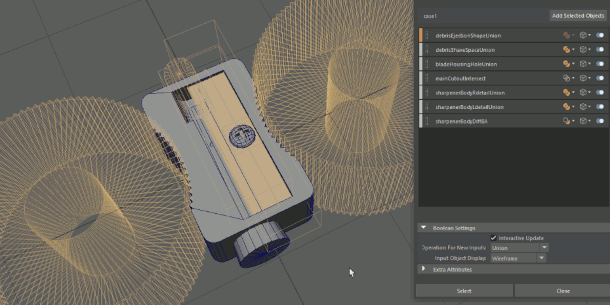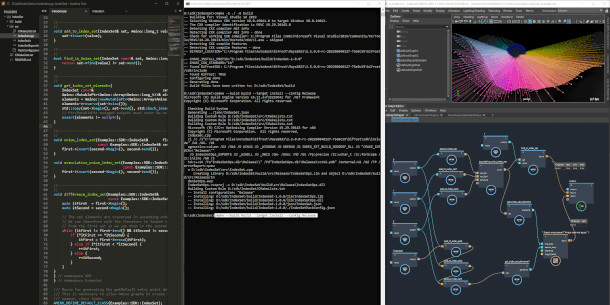Autodesk ships Maya 2023.1

Autodesk has released Maya 2023.1, the latest version of its 3D modelling and animation software, improving Boolean modelling and vertex painting workflow, and adding a new HumanIK interface template.
Maya’s multiphysics simulation plugin has also been updated, with Bifrost 2.5 introducing the new Operator SDK for customising Bifrost’s functionality via C++ programming, or integrating it with existing C++ tools.
Maya 2023.1: updates to HumanIK, Boolean modelling and vertex painting
New features in Maya 2023.1 itself include a new interface template for HumanIK, Maya’s IK solver.
The FullRigControlsConfig.xml template provides a list of all of a character rig’s spine, neck, hand and foot joints, extra shoulder joints, and additional finger and toe bones.
There are incremental updates to Boolean modelling workflow, with the update adding the option to add meshes as input objects directly from the new stack interface introduced in Maya 2023.
It is also now possible to duplicate objects by right-clicking them in the stack.
Vertex painting has been extended, with the option to restrict the Paint Vertex Color Tool to individual RGB colour channels; and to display RGB colour channels individually or in greyscale on polygonal geometry.

Bifrost for Maya 2.5: new Operator SDK for customising Bifrost via C++ programming
Outside the core application, multiphysics plugin Bifrost for Maya gets a significant update, with the new Operator SDK in Bifrost 2.5 opening up the plugin to C++ development.
The SDK makes it possible to create both Bifrost operators – Bifrost nodes programmed in C++ – and Bifrost types, which can be used either in the Bifrost graph and in C++ operators.
Autodesk describes the SDK as giving studios that use proprietary C++ tools or open-source C++ libraries the ability to “use and extend those tools in the Bifrost graph”.
Other changes include a new suite of nodes for simulating multi-coloured volumes using Aero, Bifrost’s gaseous fluid solver: for example, coloured smoke, thrown powder paint, or even ink mixing in water.
There are also a number of workflow and performance updates, particularly to simulations controlled via fields: Autodesk cites a 15% speed increase in a “realistic Aero example with a custom wind field”.
Updates to USD for Maya and the Arnold and Substance plugins
USD for Maya, the USD integration plugin bundled with the software, gets a smaller update, with USD for Maya 0.18 improving support for the MaterialX open standard for material and look dev data.
Key changes include support for AMD’s free online library of MaterialX materials, and for displaying MaterialX materials on macOS.
The update also exposes the MaterialX colorCorrect node for better support of Maya’s native shaders.
Maya’s integration plugin for Autodesk’s Arnold renderer gets a minor update, with MtoA 5.1.2 just adding support for USD for Maya 0.18.
In addition, Version 2.2.3 of Maya’s Substance integration plugin adds a new scripting command for acquiring Substance graph metadata as an XML string.
Pricing and availability
Maya 2023.1 is available for Windows 10+, RHEL/CentOS 7.6-7.9 or 8.5 and Rocky Linux 8.5, and macOS 10.14+. The software is rental-only. Subscriptions cost $225/month or $1,785/year.
In many countries, artists earning under $100,000/year and working on projects valued at under $100,000/year, qualify for Maya Indie subscriptions, now priced at $290/year.
Read an overview of the Maya’s features on Autodesk’s website
Read a full list of new features in Maya 2023.1 in the online documentation
